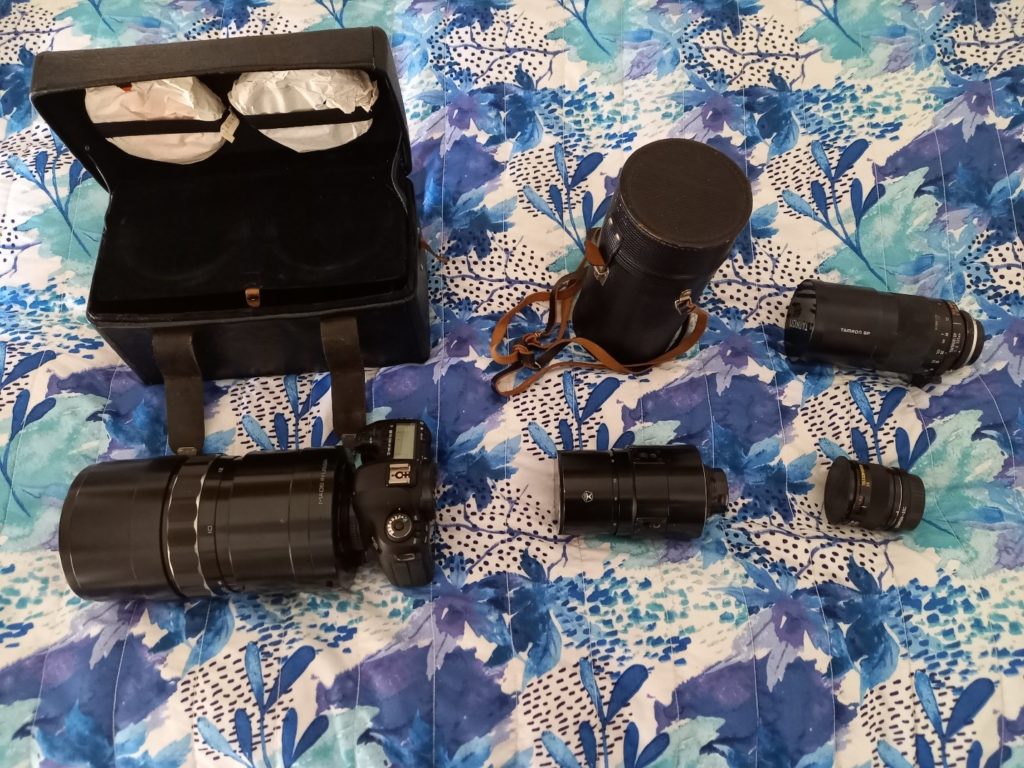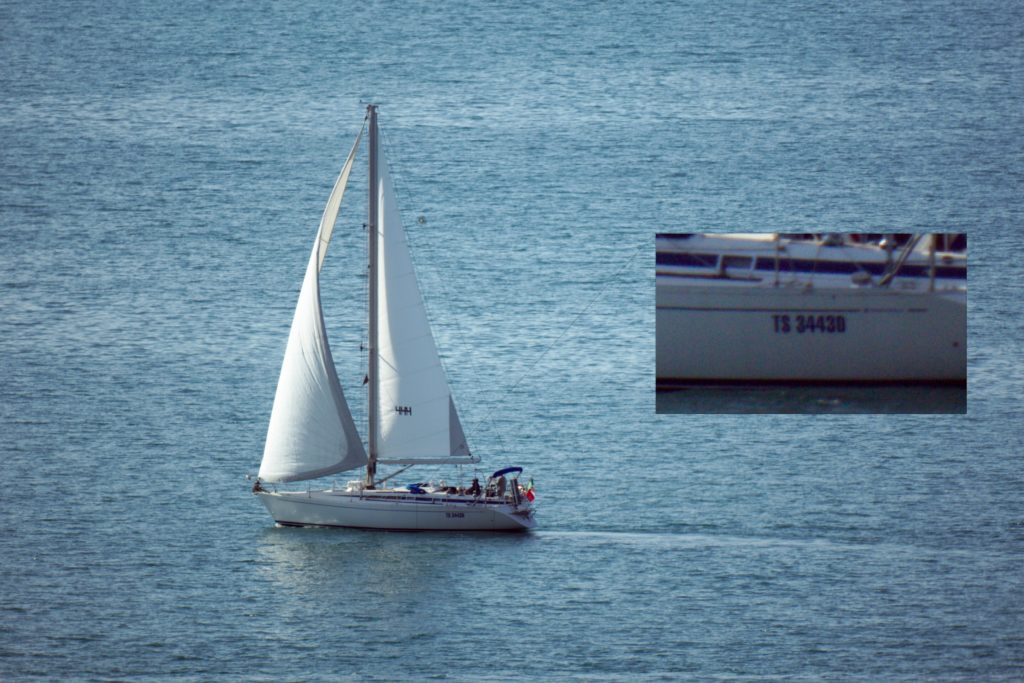Hi everyone, it’s my first blog post here, so let me introduce myself. My name is Gabriele Guarnieri and I am an electronics engineer specialized in Digital Image Processing. I received my degree in 2005 at the University of Trieste, Italy, with a thesis on High Dynamic Range (HDR) photography, at a time when nobody outside a research lab knew what it was. In the following Ph.D. I also worked on medical displays. After a period of research and teaching I moved to work at Amped Software, which I knew well because it began as a start-up from the same laboratory I was working in. At Amped I mainly work on the filters, the image processing algorithms behind them, and the graphical interface of Amped FIVE.
Image processing is both a job and a hobby. I like to take photographs that involve some technical challenge and then process the results with software that I wrote. Also, I like to experiment with uncommon types of lenses. I am not a professional photographer, and my budget is therefore limited, but sometimes I still get some interesting results with second-hand vintage equipment.
I recently found a good deal on eBay for an MTO 1000A. It is a 1100mm (actually 1084mm) f/10.5 catadioptric lens (meaning that it also contains mirrors, like telescopes) built in the 1980s in the Soviet Union by the Lytkarino Optical Glass Plant (that also supplied the military). Catadioptric designs allow to build super-telephoto lenses with a smaller size and significantly lower cost but also have some limitations, mainly the fixed aperture and shallow depth of field. Here it is on the left, with its original carrying case and colored filters that were used in black-and-white photography. It is attached to my camera (a Canon EOS 5D Mark III digital reflex, that I also bought second-hand) and together they weigh 4.5 kg.
In Germany, lenses of this type are sometimes nicknamed “die Russentonne”, which translates to “The Russian Ton”. At the center is a 500mm f/8, also from Lytkarino, together with its carrying case. It looks tiny in comparison. At the right are a Japanese Tamron 500mm, based on a different optical design, and a 2X teleconverter, that makes it a 1000mm but with a smaller f/16 aperture.

On one clear and sunny morning in October of last year, I mounted the camera and lens on a tripod and took some photos of the boats sailing in the sea in front of Trieste, from a location around 60m above sea level. Trieste is famous internationally for the “Barcolana” sailing competition, which attracts thousands of boats ranging from professionals to amateurs.
The 2020 edition was organized on a smaller scale due to COVID and ultimately canceled due to weather conditions, but the sea still remained crowded with sails for the following weeks. Focusing a manual lens of this length takes some time because, whenever I turn the focus ring, the camera shakes for several seconds. Even a gust of wind or ground vibrations are enough to spoil a photograph. I made several attempts, using a remote control to release the shutter without shake, and this is the best result I obtained. The image is sharp enough to read the small number on the hull, which is the boat equivalent of a license plate.

I naturally wondered how far away the boat was, and for this I did some math. I first looked up the 444 sail number in the list of the Barcolana participants and found that this boat is 12.18m long. The camera sensor is full-frame (36mm wide) and the boat was 10mm long on the sensor: I used Measure 1D in FIVE because I had it already open in front of me, but the measure could be done just as well with an old plastic ruler. The angle of view can be computed knowing the focal length of the lens https://en.wikipedia.org/wiki/Angle_of_view#Calculating_a_camera’s_angle_of_view: 10mm with a 1084mm lens corresponds to 0.53°. Some simple trigonometry shows that a 12.18m long object spanning this angle is around 1320m away. The same result can be obtained using a pinhole lens model, as explained in the Wikipedia article linked above. I am happy with my purchase.
A few days later I tried to photograph the Moon. When observed through the MTO 1000A it moves remarkably fast and goes out of the frame in a few seconds, so I had to make several attempts to get a good image. This is the best one I obtained. Just for fun, I balanced the colors using a spectral measurement of moonlight that I found at http://www.olino.org/blog/us/articles/2015/10/05/spectrum-of-moon-light.

The Moon was 10.1mm wide on the sensor and a quick Wikipedia look-up shows that its mean diameter is 3475km (we can ignore the fact that it is an ellipsoid because the eccentricity is very small). By repeating the calculation, I got an estimated distance of around 373,000 km.
I then tried to compute how far away the Moon was in realty and compared it to my estimate. An online calculator https://www.mooncalc.org/#/45.6576,13.7727,12/2020.10.21/19:45/1/3 shows that, when I took the photo, the Moon had a distance of 374996km from the center of the Earth and an elevation of 12.48° above the horizon. To obtain the distance from my position, I can (approximately) subtract the radius of the Earth at my latitude multiplied by the sine of 12.48°, obtaining 373,620 km. The error is only 0.18%. This may be just good luck; a much deeper theoretical and experimental validation is needed before such a measurement could have any scientific or forensic value.
In case you wonder what a professional telephoto lens could do, you can check out this video https://www.youtube.com/watch?v=W6jbFqiXels. This is definitely sharper than the MTO 1000A and autofocus makes a huge difference. You can also see very clearly the “wobble” effect caused by atmospheric turbulence; when averaged over time this produces a point spread function like the one used in the Turbulence Deblurring filter of FIVE. But keep in mind that the lens in the video costs $12,999 and is even heavier than mine.
I enjoy doing these little experiments, and I think they could be interesting for our readers, because they show that with a bit of math on the physical part of lenses, sensors and distances, it is possible to calculate the unknown part of the equations. If you have knowledge of enough factors you can calculate the others. A few examples could be:
- Estimate the distance of a subject from the camera and, if you have multiple images, even the average relative speed between the object and the camera (I know my colleagues applied this in a pretty important international case)
- Estimate the field of view of a camera
- Estimate the sensor size or the focal length, this could be useful to discriminate the type of device
Probably the most important lesson in this is that more often than not, in pictures there is something that could be measured, and quantitatively not only qualitatively, evaluated. And for those who know me, they understand how much I enjoy solving complex equations on paper.




